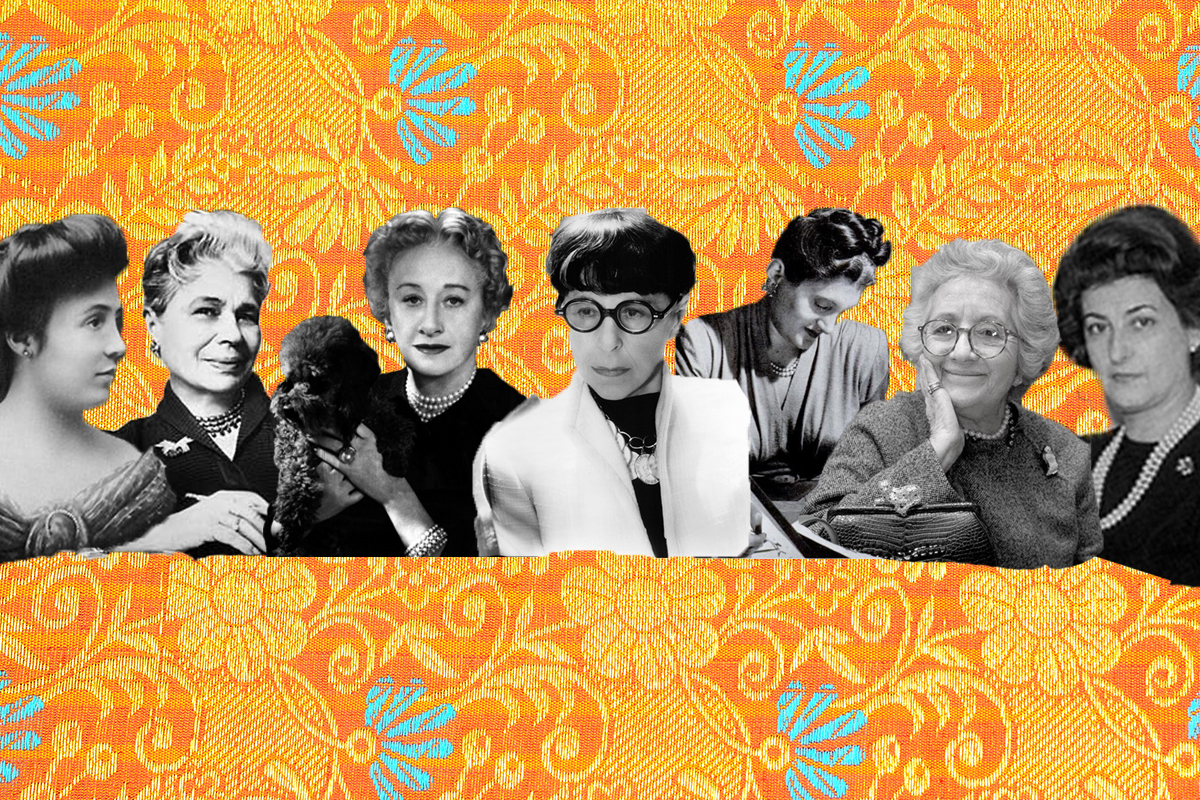Jewish immigrants led the American fashion industry in the early 1900s, with more than 90 percent of factories in New York City’s garment district owned by German Jews. Jewish fashion designers like Donna Karan, Diane von Fürstenberg, and Tory Burch have been at the forefront of style trends in past decades. But many others, including the seven below, have gone less recognized for their contributions. It’s high time we remedy that.
1. Lena Bryant Malsin (1879-1951)
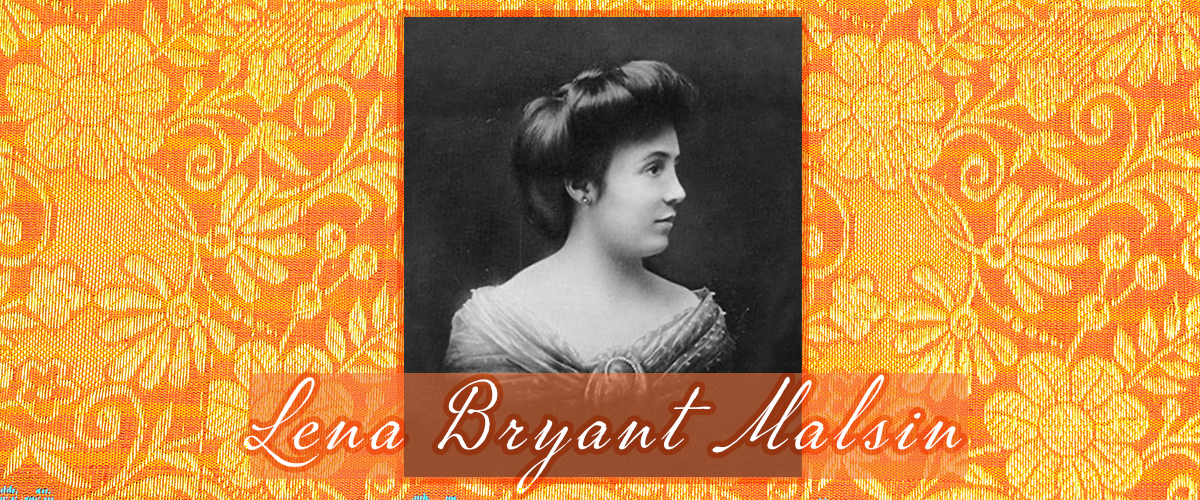
An orphan raised by her grandparents in Lithuania, Lena Bryant Malsin (née Himmelstein) not only revolutionized the maternity and plus-sized clothing industry, but also pioneered ethical workplace practices. Bryant Malsin immigrated to New York at age 16 and worked for $1 a week at a sweatshop. After becoming widowed with a young son, she eventually made enough money to open her own shop. A bank clerical error listed her as “Lane,” forever altering the name of the business. Yes, this is the story of Lane Bryant.
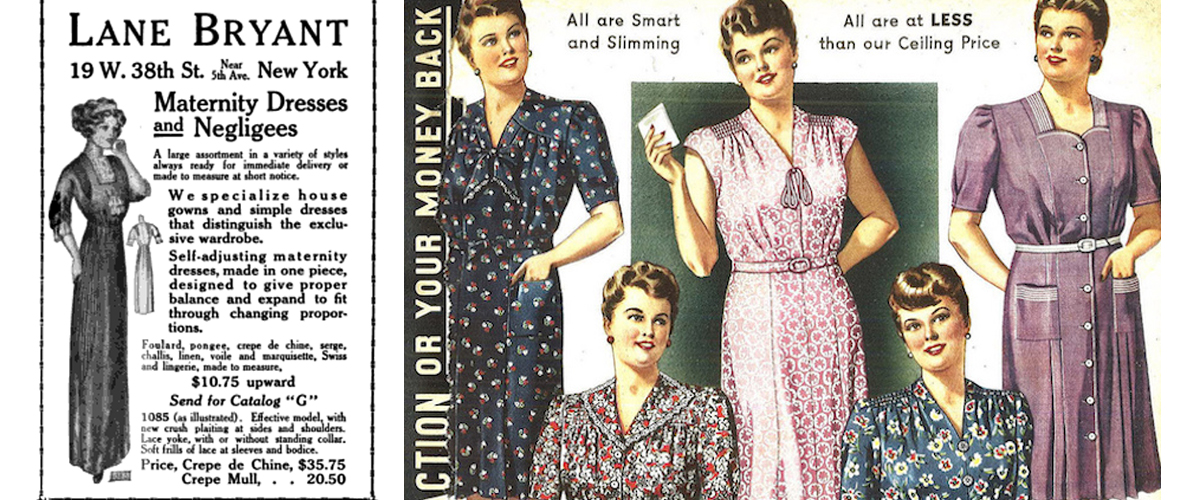
Lena designed the first commercial maternity dress, gaining popularity through newspaper ads and a mail-order catalogue. She expanded into plus-sized garments, building on three basic body types after measuring thousands of women. Dedicated to helping her employees, she provided health insurance, pensions, and other benefits largely unheard of for her era. She also donated garments following World War II and to those impacted by disasters.
2. Ida Cohen Rosenthal (1886-1973)
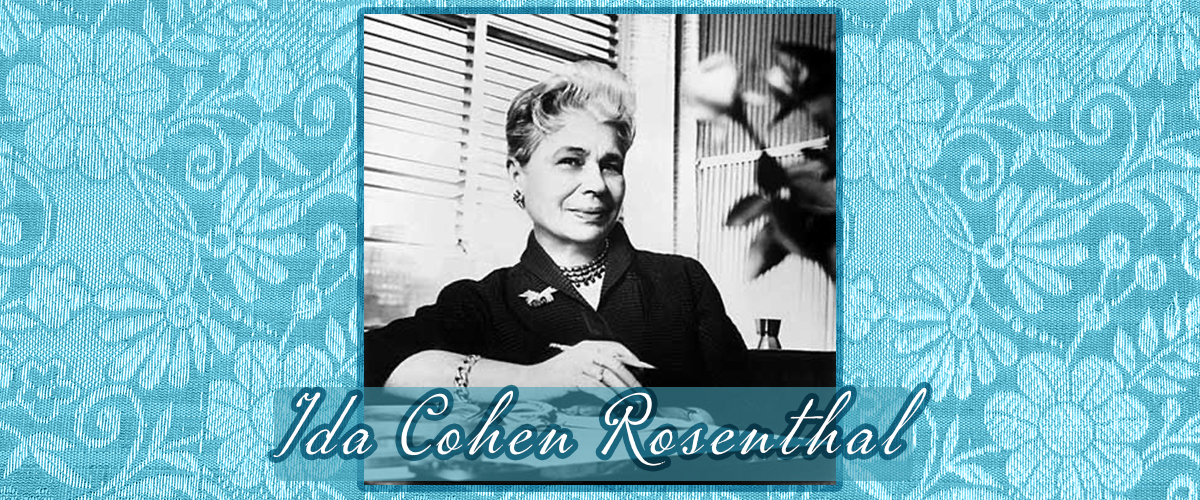
While Belarusian immigrant Ida Cohen Rosenthal created the Maidenform bra to improve the fit of her company’s dresses, the undergarment would prove to be the first commercially sold brassiere. An outspoken woman with socialist and feminist values, Rosenthal bought a Singer sewing machine on an installment plan. She rejected the popular flat flapper style of the 1920s, building dresses with built-in cups.
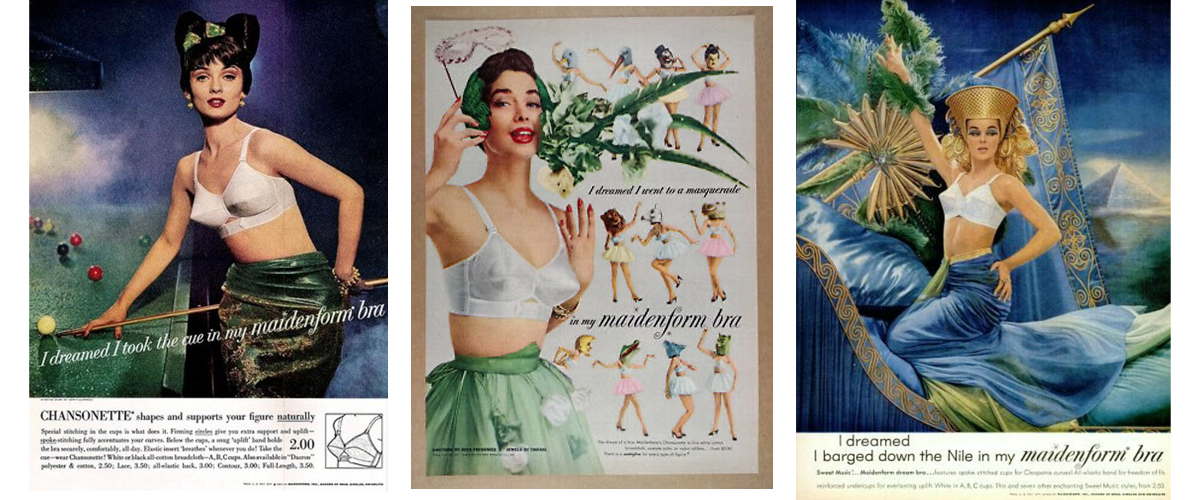
Working with husband William Rosenthal, they began producing their widely popular bras, selling 500,000 in 1928. The couple continued to collaborate on innovative designs like maternity and nursing bras as well as controversial ads showing women in their underwear. During World War II, they collaborated with the U.S. military to produce parachutes and pigeon bras for paratroopers to store the bird and then release it to send messages.
3. Hattie Carnegie (1886-1956)
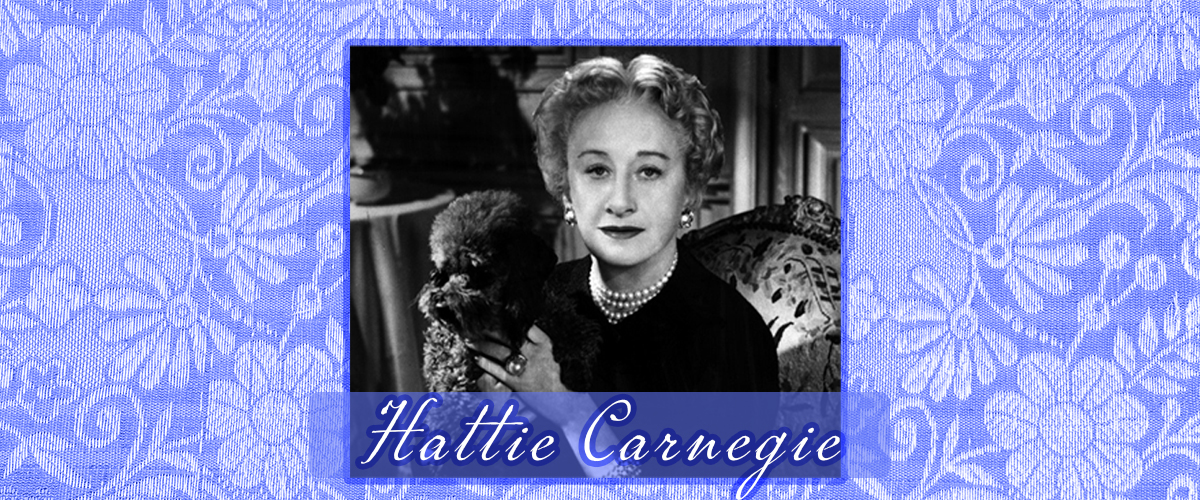
Coming from a poor family in Vienna, Hattie Kanengeiser gave herself the name of the richest man in the United States. Carnegie migrated with her family to the Lower East Side. Following her father’s death in 1902, she began working as a messenger for Macy’s at only 13 years old. After learning the millinery trade, she started a hat-making business with Rose Roth, a dressmaker. With the growth of the business, Carnegie started going to Paris to buy dresses by high-end brands like Chanel to sell in her shop and use as design inspiration. Before she became famous, Lucille Ball modeled for Carnegie, who helped teach her how to pose.
Carnegie shaped American fashion through promoting some of the country’s most influential 20th-century designers and popularizing trends like her stylish “little Carnegie suit.”
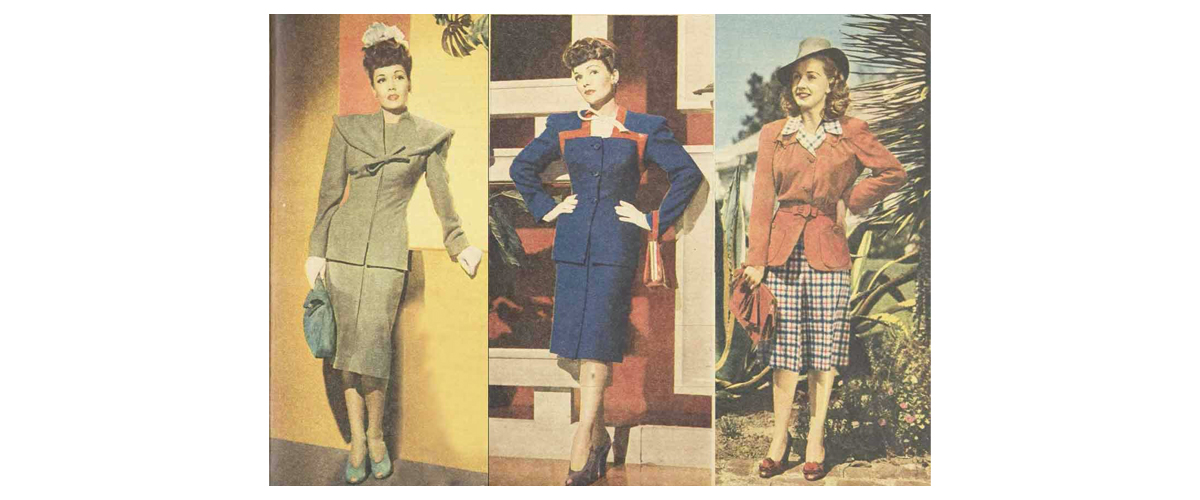
Even more, she was given the Congressional Medal of Freedom for designing the Women’s Army Corps uniform.
4. Edith Head (1897-1981)
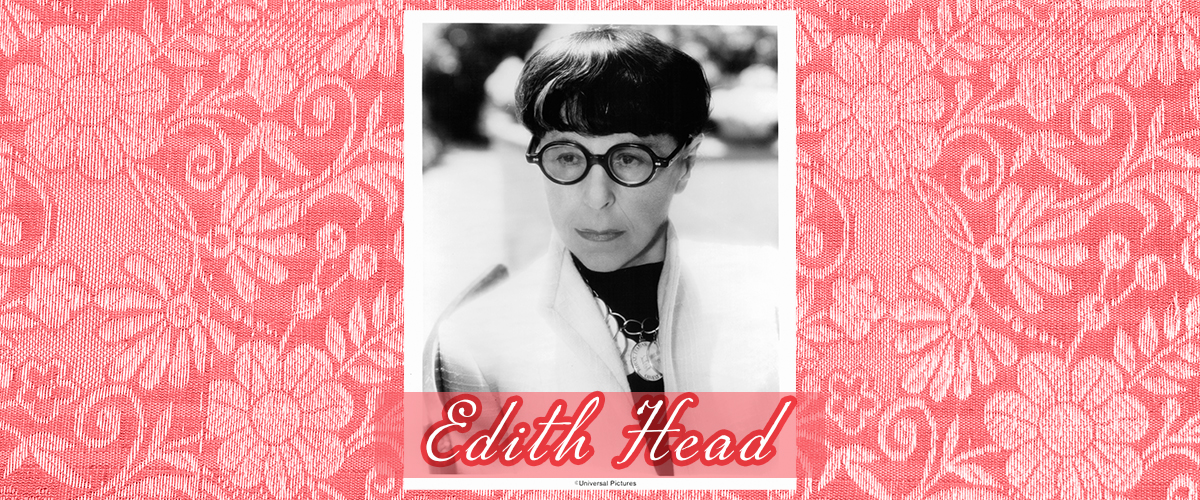
Edith Head was awarded a record-breaking eight Oscars for Best Costume Design for classic films including All About Eve, Roman Holiday, and Sabrina. Head attended the University of California, Berkeley and Stanford University for a master’s in romance languages before teaching in Hollywood. Although she had no design experience, she was hired as a costume sketch artist by Paramount Pictures in 1924. She later said she “borrowed” other students’ sketches to pass the interview.
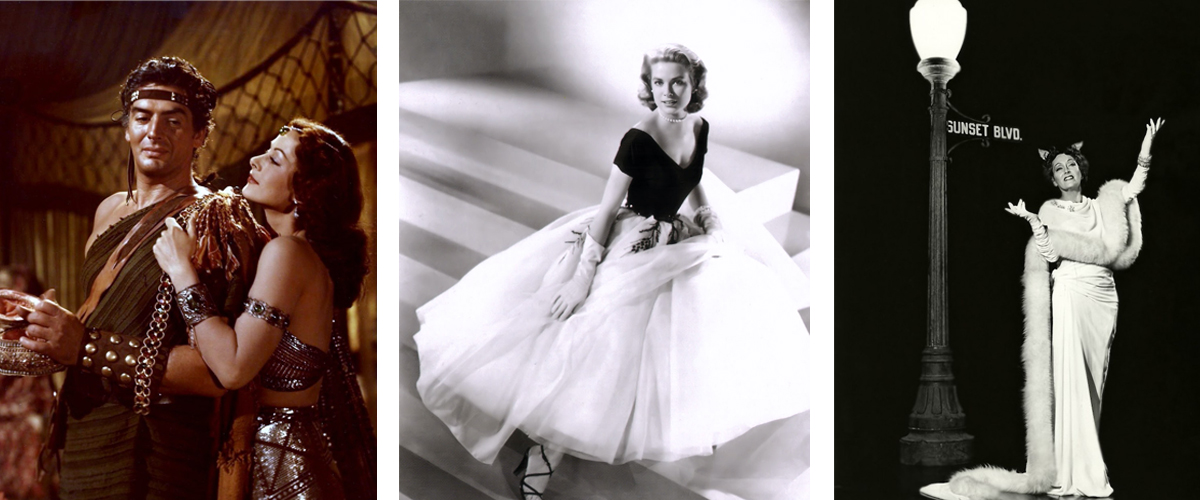
Costumes L-R: Edith Head’s costume designs for Victor Mature and Hedy Lamarr in Samson and Delilah (1949), for which she won an Oscar; Design for Grace Kelly in Alfred Hitchcock’s Rear Window (1954); Gloria Swanson in Sunset Blvd. (1950).
From silent films to working with Alfred Hitchcock at Universal Pictures, she became one of the most renowned costume designers, dressing stars like Audrey Hepburn, Grace Kelly, and Elizabeth Taylor. In total, she was nominated for 35 Academy Awards and also wrote two books. Her legacy continues: She inspired the character Edna Mode in The Incredibles movies.
5. Nettie Rosenstein (1890-1980)
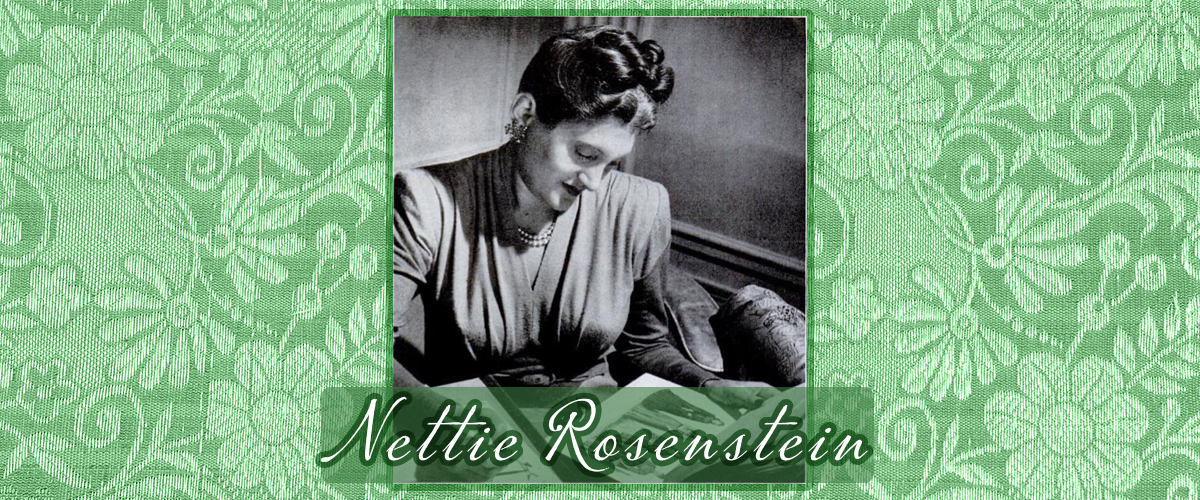
An Austrian immigrant who settled in New York, Nettie Rosenstein grew a home dressmaking operation into a million-dollar company shaping national fashion trends, most notably the little black dress. Although her designs were first sold under the label of local department stores, word of mouth gained her widespread name recognition. Her garments were out of the price range for many Americans, but they were widely copied.
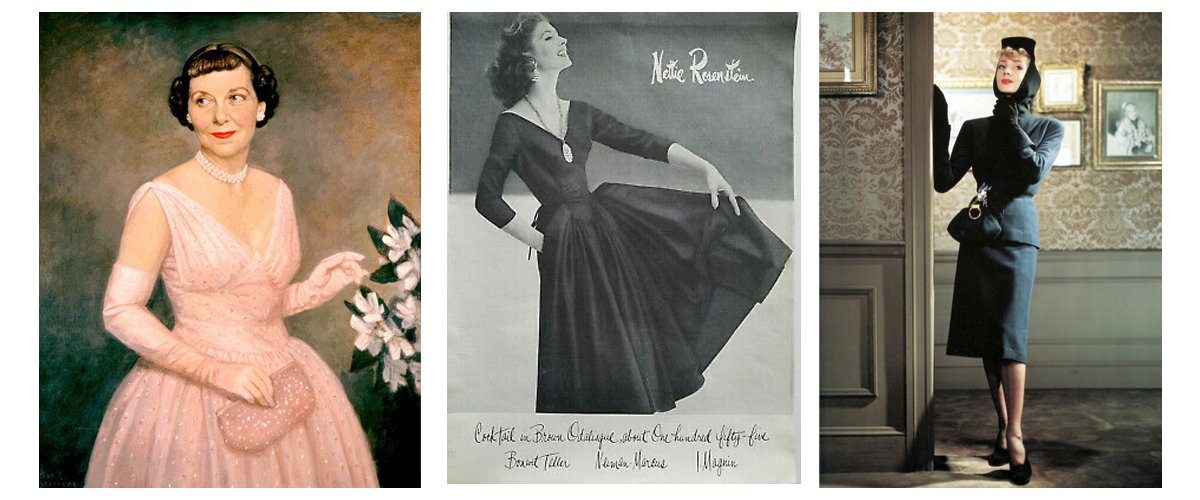
Rosenstein was most known for a black dress designed to transition from day to night as well as standout costume jewelry (some of which can still be found online, if you need a vintage bug broach to spice up your style). Life magazine named her one of the most highly regarded American fashion designers in 1937, and she was one of the first to receive the Neiman Marcus Fashion Award. She was pulled out of retirement twice and even designed First Lady Mamie Eisenhower’s dress for the 1953 Inauguration Ball.
6. Giuliana Camerino (1920-2010)
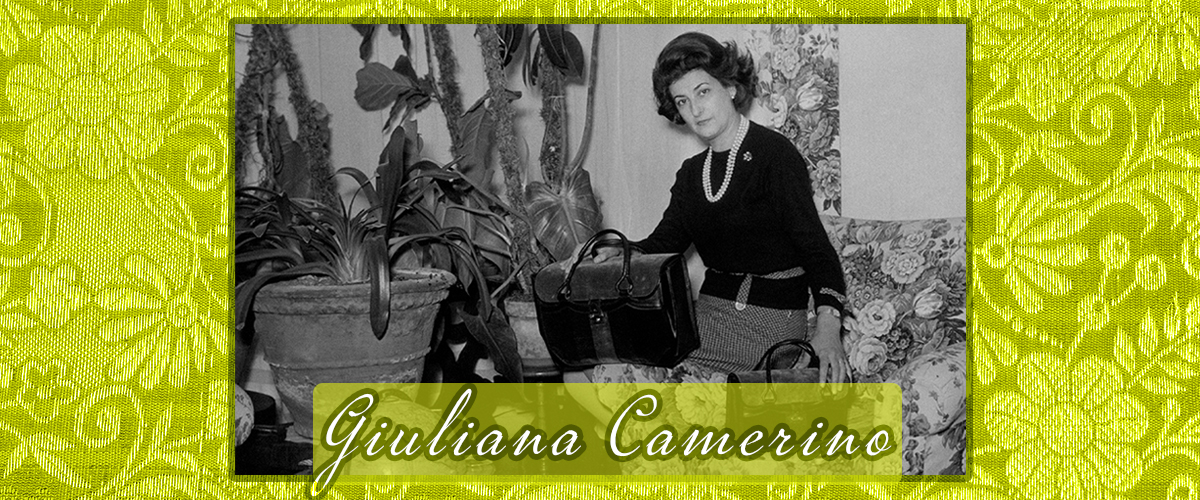
Italian designer Giuliana Camerino (née Cohen) is widely considered to be the inventor of the status bag, with her ornate accessories worn by generations of celebrities, including Grace Kelly, Farrah Fawcett, and Madonna. Born to a wealthy family in Venice, Camerino wanted to be a theater costume designer. During the war, she fled to Switzerland with her husband. There, a woman bought a bag she had created off her shoulder, leading her to a job making bags in a local shop. She said the last song she danced to before leaving her home country was “Smoke Gets in Your Eyes,” from the movie Roberta (1935). This, along with her married last name, provided the name for her label, Roberta di Camerino, which she founded in 1945 after returning to Italy.
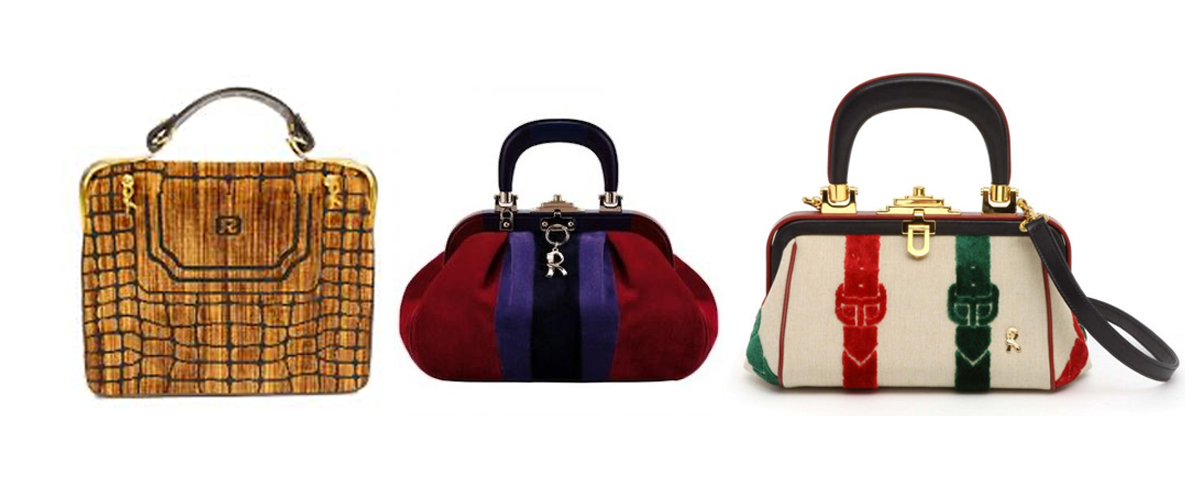
Her iconic designs, including the Bagonghi and Caravel bags, featured lush fabrics like velvet in bright colors, paired with unique hardware. The clasps and studs were created by the same craftsmen who designed the brass ornaments on gondolas.
7. Judith Leiber (1921-2018)
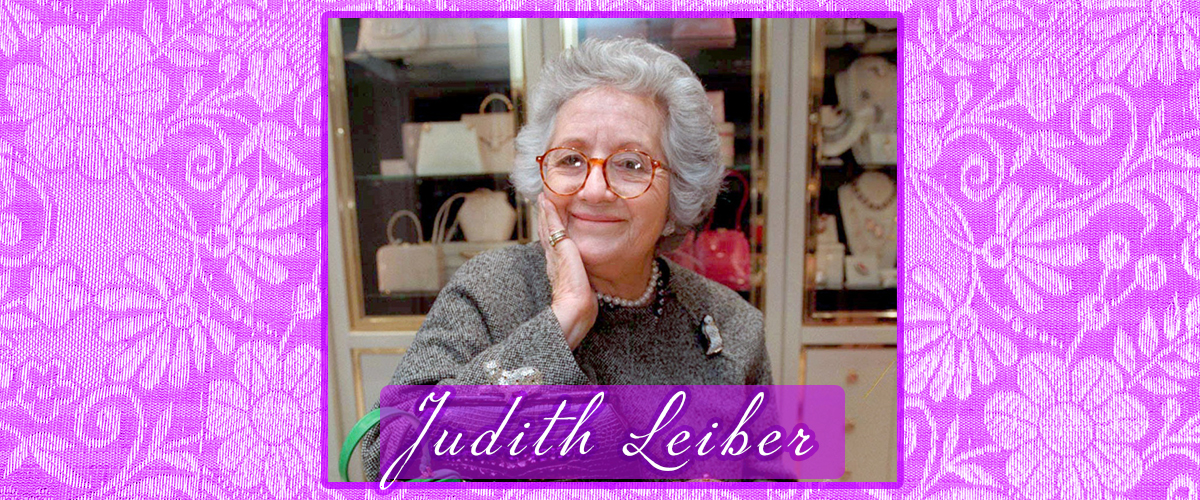
American-Hungarian Judith Leiber became world-renowned for minaudières, jewel-encrusted bags in whimsical designs, like a hamburger, lipstick tube, and butterfly. After studying chemistry at King’s College London to work in the cosmetics industry, Leiber became the Hungarian Handbag Guild’s first female member. She fled Nazi persecution and lived in a safe house for Swiss citizens before being sent to a Hungarian ghetto. Following liberation, she married Gerson Leiber, an American Army sergeant and accomplished expressionist painter. They settled in New York City, where she started her own business in 1963.
One of her bags was featured in an iconic Sex and the City episode, and her designs graced the wrists of Hillary Clinton, Jennifer Lopez, and Lupita Nyong’o, to name a few.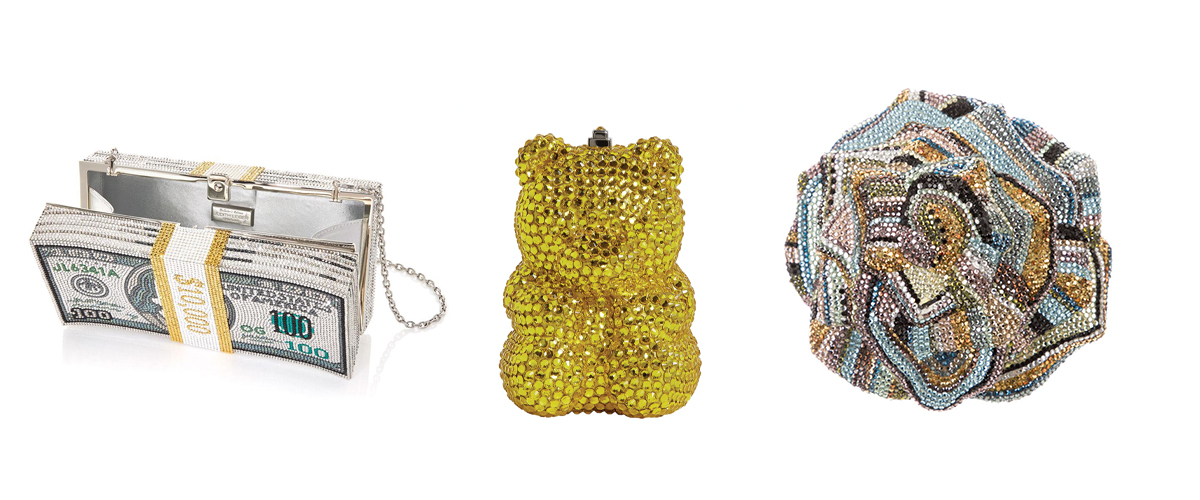 While the bags are sold in only four boutiques around the world, the Leiber Collection in East Hampton, New York hosts an impressive collection of her work and her husband’s paintings.
While the bags are sold in only four boutiques around the world, the Leiber Collection in East Hampton, New York hosts an impressive collection of her work and her husband’s paintings.
Image of Lena Bryant Malsin via LaneBryant.com; of Ida Cohen Rosenthal via JWA/David Laskin; of Hattie Carnegie by John Engstead via Wikimedia; of Edith Head by Paramount/Getty Images; of Nettie Rosenstein via LIFE/Wikimedia; of Giuliana Camerino by Mondadori via Getty Images; of Judith Leiber via Andrea Mohin/The New York Times.
